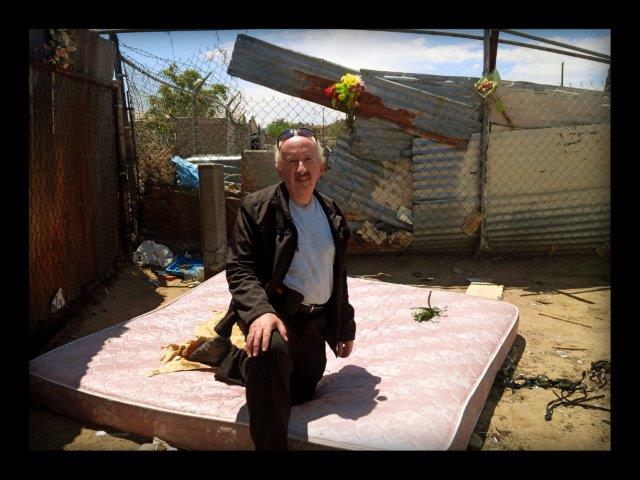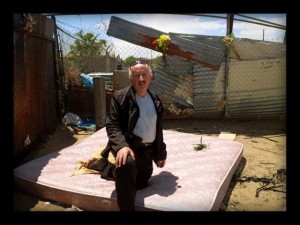By Jeremy Reynalds, Ph.D.
Founder and CEO
Joy Junction Inc.
The horrific recent killings of two homeless men in Albuquerque by three teenagers has generated numerous opinions about the motivation for the senseless act.
An Albuquerque Journal article reported that an 18-year-old neighbor who knew the three said the youngest of the accused killers was concerned about homeless people hanging out and drinking near his family’s home.
Was that enough impetus for a killing spree? Who knows. What fueled the other two teens accused of the killing?
So why is there so much violence toward the homeless, which reports suggest seems to be on the increase.
A writer for an article in ThinkProgress had an idea, “The reasons that homelessness is extraordinarily dangerous are as obvious as they are many. Sleeping in tucked away, outdoor areas leaves homeless people vulnerable to attackers. They generally have most, if not all, their possessions right there with them. They are on the streets late at night when few pedestrians are around.”
Sadly, homeless violence is not a new or isolated thing. According to a new report by the National Coalition for the Homeless (NCH), in 2013 there was a 23.8 percent increase in the overall number of attacks from the previous year. NCH said it was made aware of 109 attacks in 2013, 18 of which resulted in the victim’s death.
We asked a handful of people at Joy Junction (the homeless shelter which I founded and have led since 1986), whether they had experienced violence.
One man said while sitting on a park bench, four men walked up and started to ask him about gangs. He said, “I looked away and when I turned back around, I was facing the barrel of a 45 mm pistol. They took my backpack and hit me in the face with the butt of the pistol, nearly breaking my nose.”
Someone else wrote, “(We) were sitting behind a NAPA store when three young men ran towards us and beat us. They kicked us in the face and knocked out a couple of our teeth. They stole our purses that had our money and bus passes in them.”
Violence of any sort, whether a purse snatching or home invasion, is terrifying. However, when you’re homeless and more physically vulnerable than most, it can obviously become even more ominous.
And it’s almost certainly under reported. After the three alleged teenage killers claimed they have beaten up as many as 50 more homeless people, police appealed to homeless service providers to encourage their clients to come forward if they’ve been the victim of any assaults.
However, I doubt that many will do so. Why? Well, in the situations described above, there was a fear of retaliation by the perpetrators. But that’s not the only reason.
A number of the most vulnerable homeless who sleep outside because they perhaps suffer from PTSD, or have been banned by area shelters for their behavior, have warrants for minor offenses such as loitering, panhandling or public urination.
And while I’m not defending urinating in public, it’s hard to use the bathroom when many Downtown Albuquerque businesses only have theirs available for paying customers, and the city won’t install portable ones because of fears they will be used for prostitution or illegal drugs.
So if you have a warrant and get beaten up or robbed, it’s quite likely that you won’t report the crime, because you don’t want to face a trip to jail.
So what is the answer? One solution is a better relationship between the homeless and local police. The homeless should be able to regard the police as a trusted resource in time of need, not a bully to be feared and avoided.
Citations – apparently often given at an officer’s discretion and which turn into warrants when ignored, should only be given when absolutely necessary. Is it fair to cite a homeless person for urinating in public when there are no public restrooms available?
The horrifying problem of homeless violence in Albuquerque will not be solved by one or two line vitriolic zingers on Facebook.
A quick browse of one local television station’s comments section yielded these little “gems.” While I respect people’s right to free speech, comments like this aren’t helpful and I wonder if the authors would say anything even remotely similar in public away from the anonymity and safety of their computer keyboard.
Describing the alleged killers, one person wrote “Three wastes of space,” Someone else suggested, “Put these rabid dogs down. No bringing these animals back into our community.”
Another person said, “I’m interested in whether these kids got the attitude that the homeless are ‘fine for killing’ from watching how APD deals with them.”
In response to that comment someone else wrote, “How many homeless has APD ‘dealt’ with?”
So how do we address violence toward the homeless? If you see someone on the street in need of help (maybe the victim of a violent act), at the very least give emergency services – or Joy Junction – a call. That could save their life.
We also need to realize that violence against the homeless is a community issue in which we all have a part to play by offering solutions-not diatribes in person or on social media-in a voice of calm and reason.
Who’s up for the challenge? I’ll be the first volunteer.



